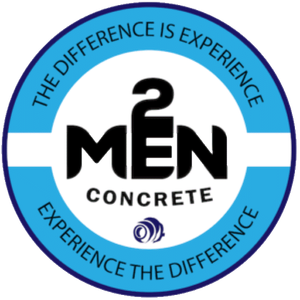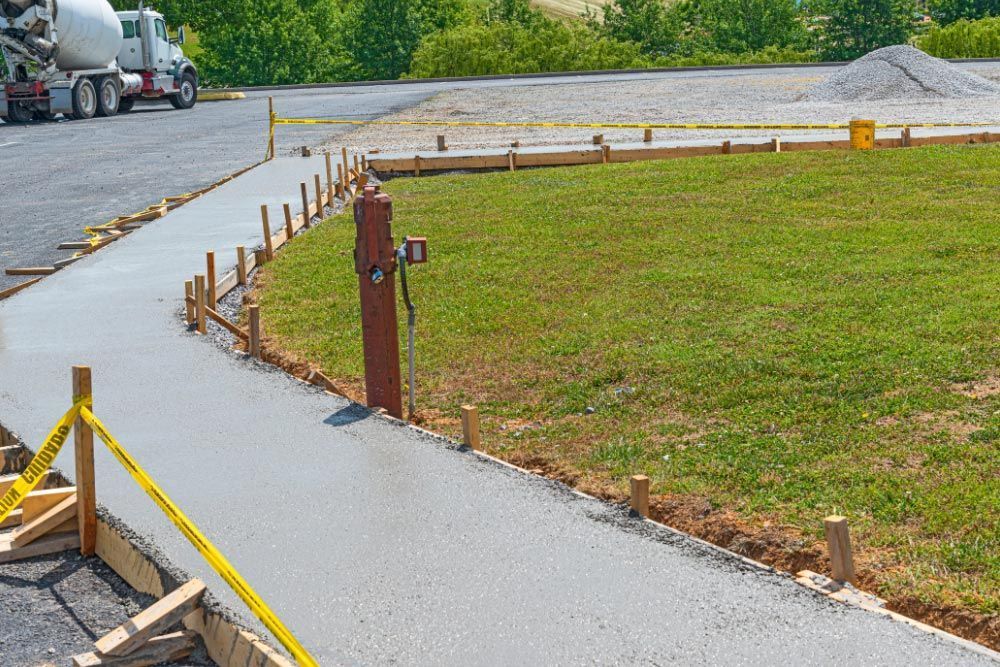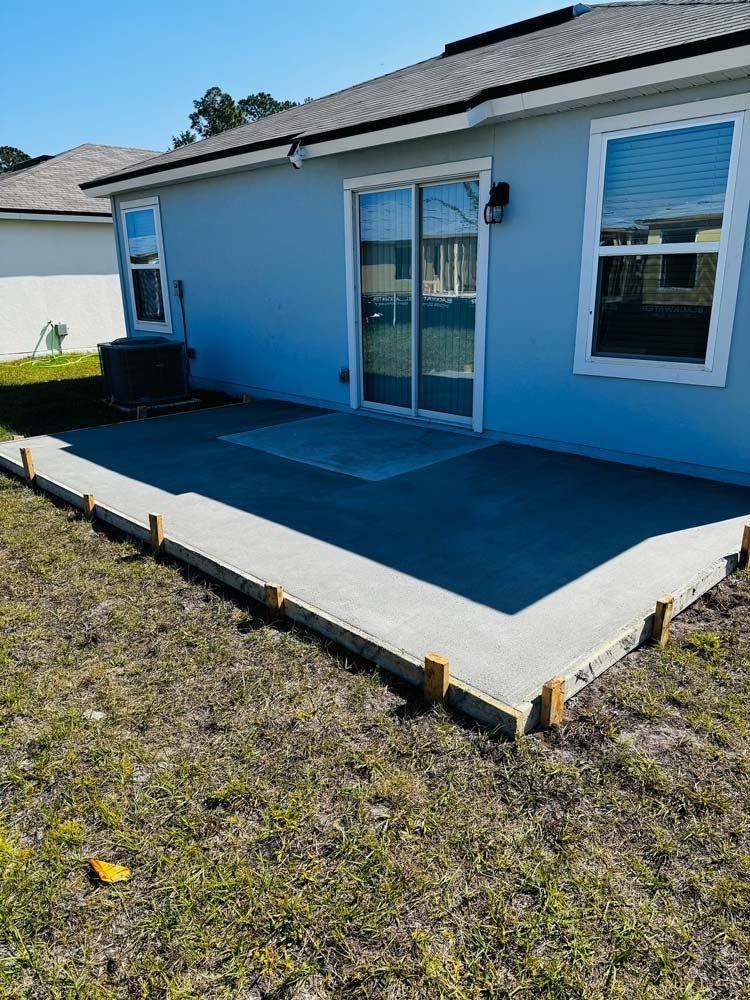Stamped Concrete vs Pavers: Which Is Better for Your Outdoor Project?
When planning an outdoor upgrade, whether it’s a patio, driveway, walkway, or pool deck, selecting the right surface material plays a crucial role in both the look and longevity of your project. Two of the most popular options homeowners consider are stamped concrete and pavers. Both materials offer unique aesthetic appeal, durability, and functionality, but they differ significantly in cost, installation, maintenance, and overall performance.
Understanding these differences will help you choose the option that best fits your budget, design preferences, and lifestyle. In this article, we’ll break down everything you need to know about stamped concrete versus pavers to help you make an informed decision for your outdoor space.
In this article, we’ll dive deep into the pros and cons of both stamped concrete and pavers. We’ll compare costs, durability, installation time, maintenance requirements, and aesthetic options. Whether you’re a homeowner looking to boost curb appeal or a contractor planning your next project, this guide will help you decide which material is the best fit for your outdoor project.
Understanding Your Options: Stamped Concrete vs Pavers
What Is Stamped Concrete?
Stamped concrete is a decorative concrete poured in place, then imprinted with patterns and textures while still wet. This method allows the concrete to mimic the look of stone, brick, tile, wood, and other materials at a fraction of the cost.
Benefits of Stamped Concrete
- Cost-Effective: Generally less expensive than pavers.
- Quick Installation: Usually installed in 1-3 days.
- Versatile Design: Wide range of patterns and colors available.
- Smooth Surface: Creates a continuous, seamless look.
Drawbacks of Stamped Concrete
- Cracking Risk: Concrete can crack over time due to settling or weather changes.
- Maintenance: Requires resealing every 2-3 years to protect against wear and staining.
- Repair Challenges: Matching repairs or patches to existing stamped concrete can be difficult.
- Slipperiness: Can be slippery when wet unless textured finishes are applied.
What Are Pavers?
Pavers are individual units made from materials like brick, stone, or concrete that are installed by hand in various patterns. They offer a natural, classic appearance and excellent durability.
Benefits of Pavers
- Durability: Highly durable and can last 25 years or more.
- Easy Repairs: Individual pavers can be replaced without disturbing the surrounding area.
- Slip Resistant: Natural gaps and textures provide good traction.
- Aesthetic Variety: Comes in many shapes, sizes, and colors for custom designs.
- Drainage: Allows water to seep through gaps, reducing runoff and puddling.
Drawbacks of Pavers
- Higher Cost: Typically more expensive than stamped concrete due to labor and materials.
- Longer Installation: Takes more time and effort to install properly.
- Weed Growth: Gaps between pavers may allow weeds to grow unless properly maintained.
- Unevenness: Pavers can settle unevenly over time if the base is not installed well.
Stamped Concrete Cost vs Pavers Cost: 2025 Breakdown
| Factor | Stamped Concrete | Pavers |
|---|---|---|
| Average Cost per sq. ft. | $8 - $18 | $10 - $25 |
| Materials | Concrete mix with stamping molds and stains | Brick, stone, concrete blocks, or clay |
| Installation Time | Faster, usually 1-3 days | Longer, 2-5 days depending on complexity |
| Durability | Durable but prone to cracking over time | Extremely durable, individual units can be replaced |
| Maintenance | Needs resealing every 2-3 years | Low maintenance; occasional weed removal and re-leveling |
| Aesthetic Variety | Can mimic stone, brick, tile, wood patterns | Natural textures and shapes with many styles and colors |
| Repair Cost | Can be costly and difficult to match | Easy and cheaper to repair or replace sections |
| Slip Resistance | Can be slippery if not textured properly | Generally more slip-resistant due to gaps and texture |
| Longevity | 10-20 years with proper care | 25+ years or more |
| Best Uses | Driveways, patios, pool decks | Walkways, patios, driveways, outdoor kitchens |
Durability and Maintenance After Land Clearing
The durability of your cleared land and the level of maintenance required largely depend on the clearing method used and how well the site is managed afterward.
- Mechanical Clearing: This method removes most vegetation and stumps, creating a clean slate for construction or farming. However, heavy machinery can compact soil, which may affect drainage and plant growth unless remedial steps like aeration are taken. Regular maintenance may be needed to control regrowth, especially if roots and seeds remain.
- Manual Clearing: Manual clearing tends to be gentler on the soil and surrounding environment, reducing damage and erosion risk. Sites cleared this way may require less intensive maintenance but could need periodic trimming to manage new growth.
- Controlled Burning: Burning can improve soil health by returning nutrients but may leave some roots and seeds intact, causing regrowth. Maintenance involves monitoring and controlling new vegetation, which can require follow-up clearing or herbicide application.
- Herbicide Application: Chemical clearing minimizes physical disturbance, preserving soil structure. However, repeated applications might be necessary to prevent regrowth, and there can be environmental considerations regarding runoff and soil health.
Ongoing Maintenance Tips:
- Monitor the site regularly for unwanted regrowth.
- Use mulching or planting cover crops to reduce erosion and improve soil quality.
- Schedule periodic inspections to address invasive species early.
- Consult professionals for long-term land management plans tailored to your site.
Proper maintenance after clearing ensures your land remains usable, safe, and ready for its intended purpose.
Which Should You Choose?
1: Choose Stamped Concrete if:
- You want a budget-friendly option.
- You need fast installation.
- You prefer a smooth, continuous surface.
- You’re okay with some maintenance and occasional resealing.
- You want a wide variety of decorative patterns.
2: Choose Pavers if:
- You want superior durability and easy repairs.
- You prefer a natural, classic look.
- You need slip resistance and good drainage.
- You’re willing to invest more for longevity.
- You want the flexibility to replace or redesign sections later.
Final Thoughts
Both stamped concrete and pavers can transform your outdoor space beautifully. Your choice depends on your budget, timeline, style preference, and maintenance willingness. If you’re looking for affordability and quick installation, stamped concrete is a great option. For durability, ease of repair, and timeless appeal, pavers are often the better investment.
If you’re ready to upgrade your outdoor space and want expert advice or installation, contact our Local team today! We specialize in both stamped concrete and paver installations and can help you pick the perfect solution for your home.
Frequently Asked Questions
What is the main difference between stamped concrete and pavers?
Stamped concrete is a poured concrete slab that is textured and colored to mimic other materials, while pavers are individual stones or bricks that are laid piece by piece. Stamped concrete offers a continuous surface, whereas pavers create a segmented, more natural look.
Which option is more cost-effective for large outdoor areas?
Stamped concrete is generally more cost-effective for large projects because it requires less labor and time to install. Pavers tend to cost more due to the material price and the detailed installation process.
How long does each option typically last?
Stamped concrete typically lasts 10 to 20 years with proper maintenance, while pavers can last 25 years or more because they are easier to repair and replace.
Is one option easier to repair than the other?
Yes. Pavers are easier to repair since individual pieces can be replaced without disturbing the entire surface. Repairs to stamped concrete are more complex and may be noticeable due to color and pattern matching.
Do stamped concrete and pavers require different maintenance?
Yes. Stamped concrete needs to be resealed every 2 to 3 years to protect it from cracking and fading. Pavers require less sealing but need occasional cleaning, weed control, and sometimes resetting if they shift.
Which surface is safer when wet?
Pavers generally offer better slip resistance because of their textured surfaces and natural gaps, which help with drainage. Stamped concrete can be slippery if it doesn’t have a textured finish.
Can both stamped concrete and pavers be customized to fit my design preferences?
Absolutely. Stamped concrete offers many patterns and color options to mimic natural materials, while pavers come in a variety of shapes, sizes, and colors that allow for creative patterns and designs.



